
www.buildingsandcities.org/insights/commentaries/decolonising-cities-street-naming.html
Decolonising Cities: The Role of Street Naming
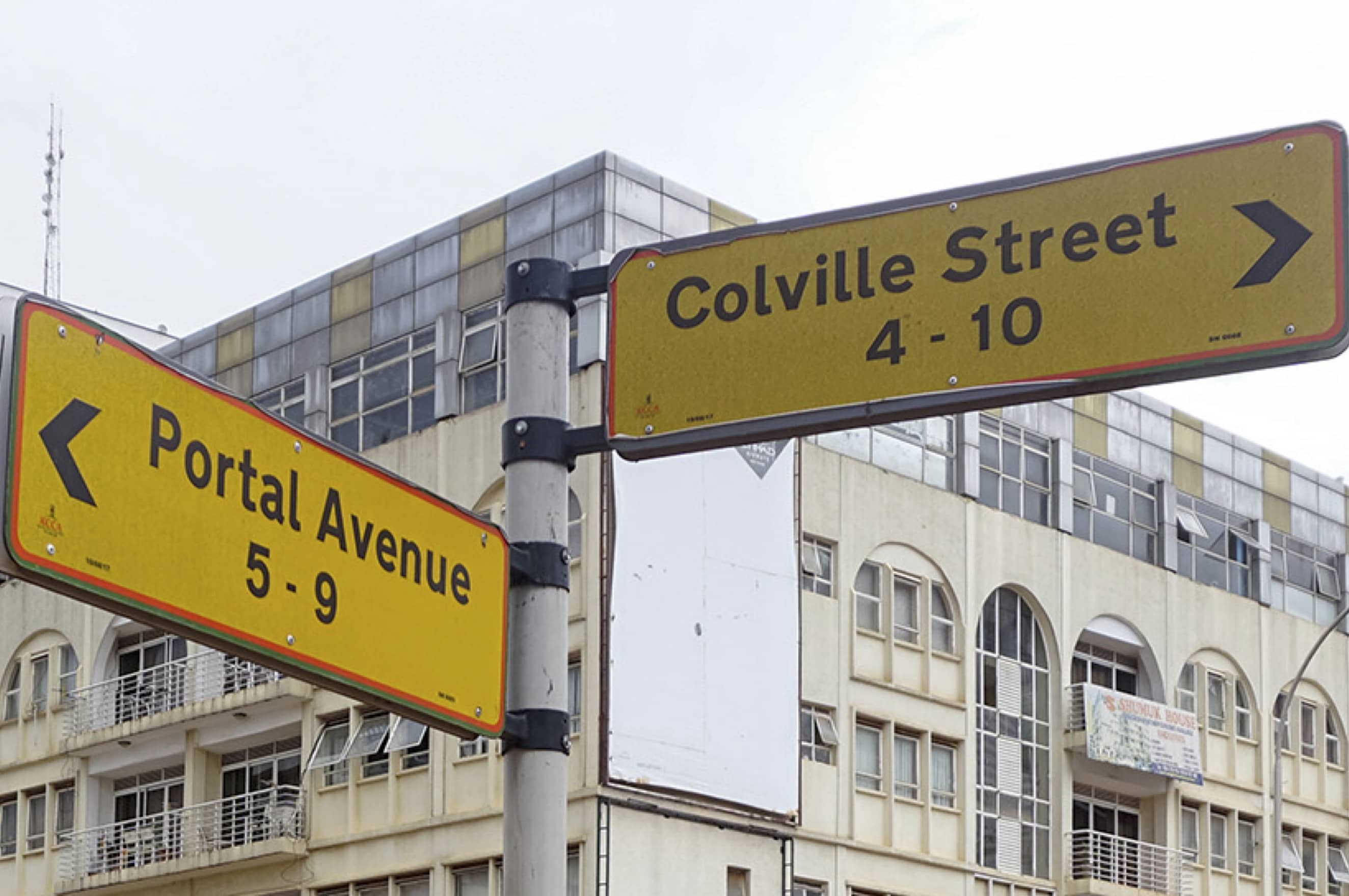
Strategies for decolonising street names: top-down by city authorities or bottom-up by local communities?
During colonialisation, street names were drawn from historical and societal contexts of the colonisers. Street nomenclature deployed by colonial administrators has a role in legitimising historical narratives and decentring local languages, cultures and heritage. Buyana Kareem examines street renaming as an important element of decolonisation.
Introduction
There is a solid body of scholarship that acknowledges the contested nature and issues of social justice, citizenship, and identity in street name politics and toponymic change. However, more work needs to be done to illuminate the forms of knowledge inclusion and exclusions in decolonial standpoints on street renaming processes. Additionally, more consideration of standards and locational data for spatial organisation is needed which draws on diverse knowledges to negotiate and contest the codification of identities, cultures, historical and geographical features.
Why street names are important
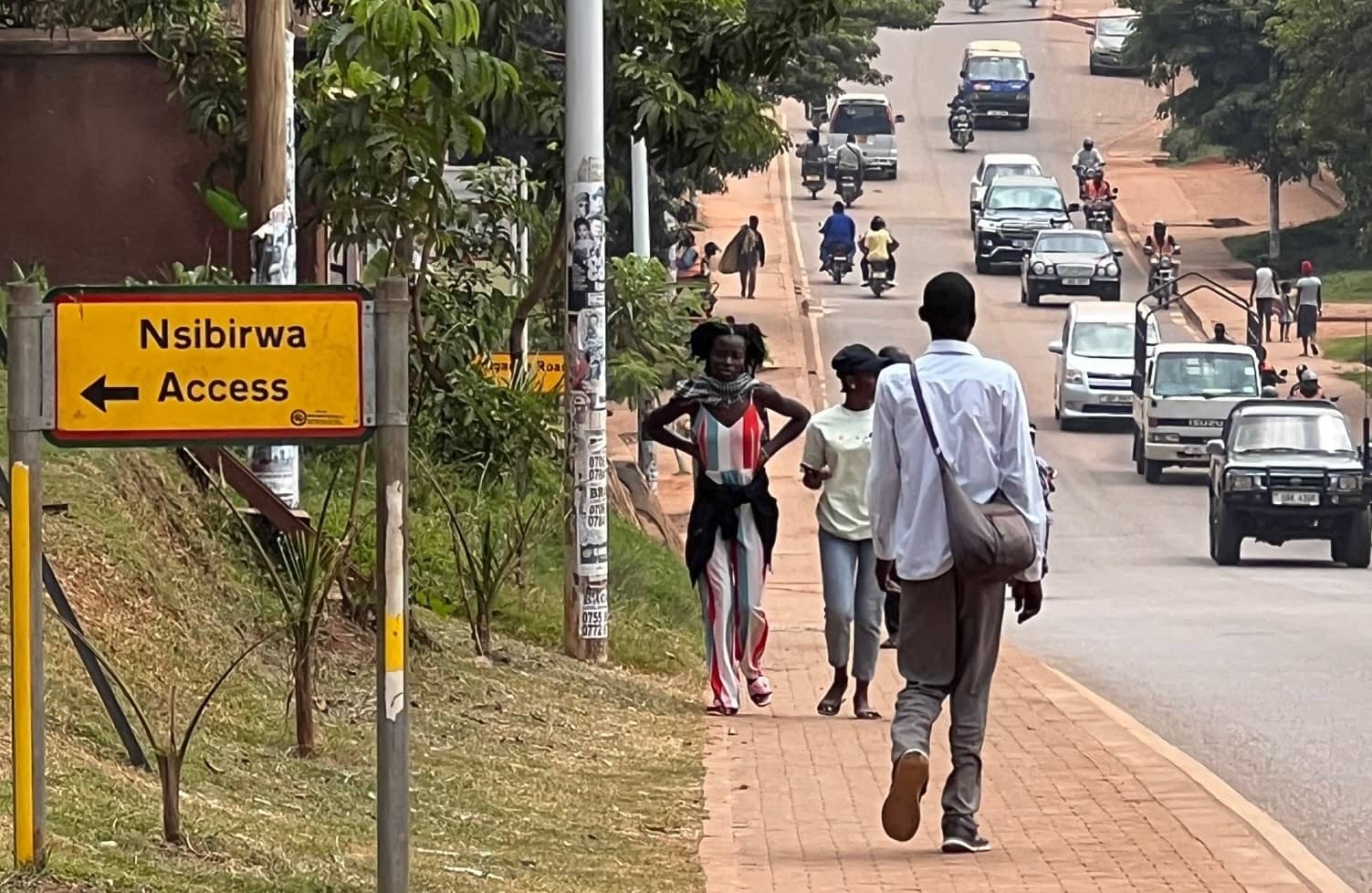
The United Nations Group of Experts on Geographical Names (UNGEGN) promotes the national standardisation of geographical names, as an essential building block for identity and political struggles (Ormeling et al. 2023). For instance, if one was to undertake a transect walk noting street names in Kampala city, Uganda, the presence of former colonial administrators would be unmistakable: Major General Henry Colville Street, Victoria Avenue, Mackenzie Vale, Dewinton Road, Phillip Road, Windsor Crescent, Colville Street, Lugard Road, Windsor Loop, Portal Avenue, Baskerville Avenue, Tufnell Drive and Hesketh Bell Road to name a few (Figure 1). Attempts to unroot colonial legacies have paved way for parallel street naming which have restored legacies and marked the territorial presence of tribal kings, legends, religious leaders, chiefs, landlords and those at the helm of national government (Figure 2). While this has potential to establish an important source of pride and information for future generations, more needs to be done to break away from perpetuating hegemonic framings and appropriations of urban spaces.
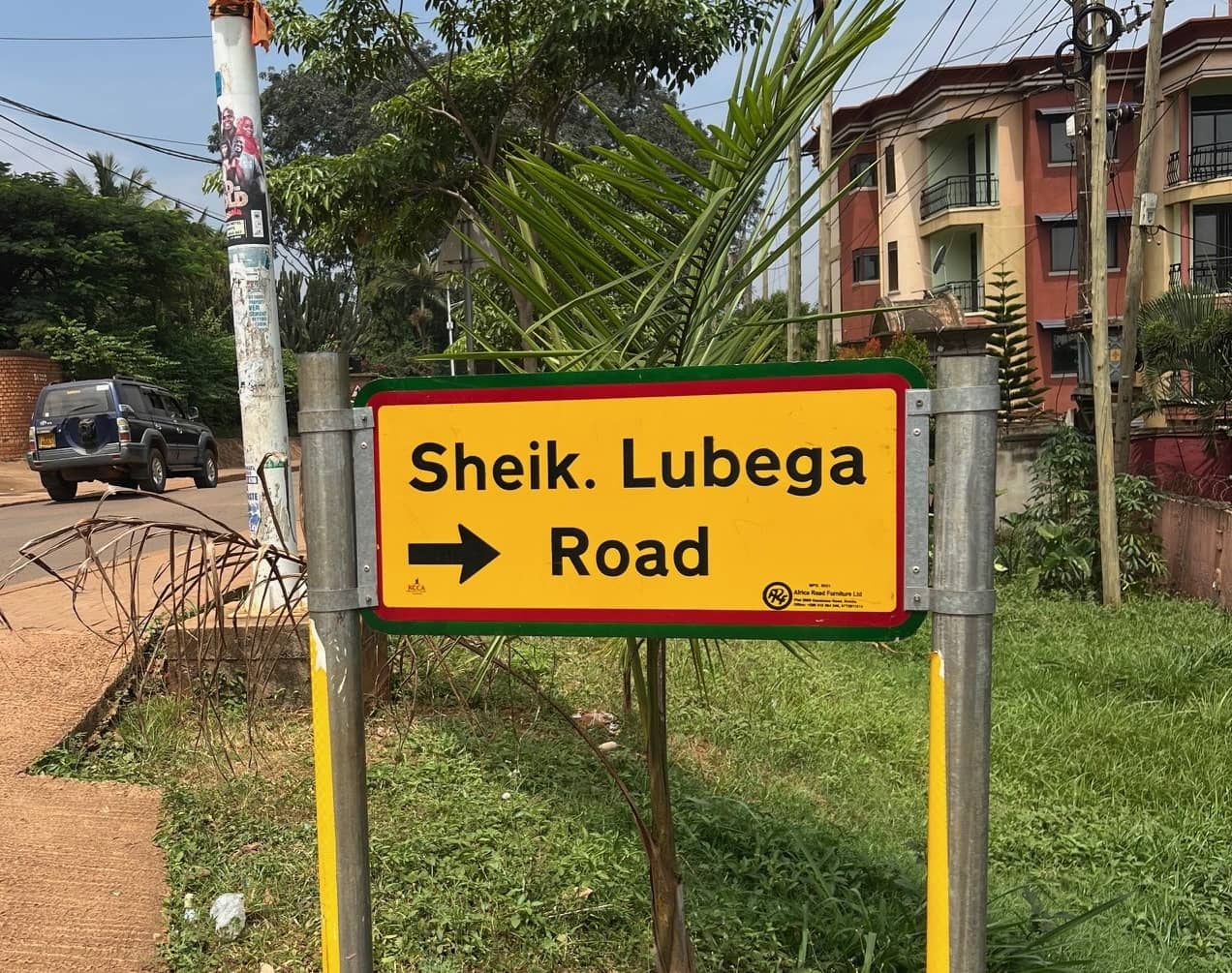
In 2017, the Kampala Capital City Authority (KCCA) issued the Kampala City Road Naming Guidelines as a policy instrument and programme to rename name all the roads in the city. To date, over 9,234 roads in the five divisions of Kampala, have been renamed (Figure 3). However, this renaming has still been the preserve of municipal administrators, private investors and political elites, excluding local communities from the process.
Top-down replacement of street names
Kadmon (2004) and Cacciafoco & Cavallaro (2023) show that politically-motivated name replacements can be found in any region undergoing administrative and local regime changes. The contested nature of this type of mandated replacement is not simply a matter of determining whether new names need to be guided by new standards, but also entails a debate about whose name and where that name is best situated within public spaces. This is especially important when considering whose knowledge is used as the basis for renaming, if it results in commemoration and legitimation, and symbolises the degree of power that elites have over citizens, i.e. toponymic changes may preserve or transcend long-standing ethnic, racial, and economic divides (Alderman & Inwood 2013; Carter 2024).
A campaign was launched in Kampala City in 2020, seeking the removal of British colonial figures from streets, landmarks and monuments as a way of reconstructing the historical record of street names. In many cases, the nomenclature used by explorers, colonial administrators and military conquerors gave names outside of the native's knowledge of geographical features. These exonyms remained in use as the city's navigation aids for over seven decades.
Although the motivation was to reduce the impact of colonisation, the new Kampala City Road Naming Guidelines (KCCA 2017) became a canvas for political authorities and the private sector to impose a specific history and privilege other groups. Their proposed changes reinscribe elite ethnic names (such as Kintu Road) onto urban spaces with a 'masculine default' (Figure 2). Although the initial intention is to commemorate Ugandan events, nationalist leaders and places, it may not necessarily be different from the hegemonic colonial past. So, contrary to the overall objective of decolonisation, the process of street name replacement in Kampala gave citizens the 'right to participate in renaming' and not 'the right to appropriate diverse knowledges,' in transforming the built environment.
Bottom-up replacement of street names
The indigenisation of street names would see addresses for local communities being changed to reflect their urban memescape. This would not be determined by municipal authorities, but would reflect the intimate memories and geographical narratives of residents. Underlying bottom-up replacement is street naming that transcends prominent individuals whose memory ought to be preserved for one reason or another, to demonstrating connections with public memories of cultural, geographical, and political histories, and how this shapes commemorative priorities. Pride and preservation of the history in this case could be through local-to-local dialogues with urban dwellers on symbolic meanings and spatial orders that provide legitimacy to their meanings of place. For example, this may be drawn from conversations people have when giving directions; "turn left at the mango tree." Indigenisation finds inspiration in ordinary spaces like the Lebanese restaurant, fuel station, local market, taxi park or mango tree, as the mental note for an average city traveller and mode of representing streets.
The exponential rise of food and motorcycle delivery companies in African cities (Figure 4) seems wedded to the indigenisation of street name addresses by their customers, and not necessarily postcolonial affixes of formal names. The emergence of Google maps and other technological applications including smart phones, with the click of a "share my location" button, has not marginalised location names appropriated by local communities. Telephone airtime could be more expensive when compared to typing in a formal address and have Google take you there, but often delivery persons make repeated calls for directions because of the stark culture to indigenise naming of neighbourhood streets and paths.
Attempts have been made in other cities to use participatory video with residents as a mechanism for a more public engagement to generate a counter visual narrative for street naming. Academics at the University of Padova's School of Sociology worked with mostly migrants and working-class residents to co-produce a decolonise-the-city video (Campagni 2021). The video emerged from a mixed methods approach involving participatory video and visual tours that empowered citizens to contest the naming of roads carrying colonial names, which had been unchanged for decades.
In Kampala, residents from affluent settlements are being represented in renaming streets and buildings by KCCA, as a response to postcolonial consciousness about racially codified gentrification. However, slum dwellers and semi-formal settlements are contesting this renaming process which excludes them, and is devoid of their intimate memories and counter-narratives. In search for a legitimate and inclusive renaming process, these local people invoke names and addresses that are based on their own geographical interpretations, except for the city's main roads.
Residents are capable of drawing on their intimate memories of place to produce place names that enrich the navigation of daily activities within neighbourhoods which standardised forms of street naming exclude. When indigenising street names, local terms and experiential knowledge about a place becomes embedded and more influential, restoring legacies and ancestry, or honouring national heroes.
Conclusions
Notions of national identity and urban citizenship are increasingly shaped by the formal marking of sites and streets, using language and symbols that can play a crucial role in bringing people together. When society undergoes significant urban transformation it can spark debates about divergence of meanings attached to places and historical legacies. The renaming of streets and buildings can critically look at how decolonial standpoints analyse the materiality of built environments. However, the renaming process is often the preserve of municipal administrators, private investors and political elites, precluding local knowledge which is needed to ensure inclusivity and justice. Therefore, although street renaming has potential for urban transformations, investigation into its use as a tool for asserting the dominance of powerful interests is needed, and to combat this, different approaches to democratising street naming in cities should be adopted.
References
Alderman, D.H. & Inwood, J. (2013). Street naming and the politics of belonging: spatial injustices in the toponymic commemoration of Martin Luther King Jr. Social & Cultural Geography, 14(2), pp.211-233.
Cacciafoco, F.P. & Cavallaro, F. (2023). Place Names: Approaches and Perspectives in Toponymy and Toponomastics. Cambridge University Press.
Campagni, E. (2021). Looking for a space to breathe: Decolonising Italian cities. Anthropological Journal of European Cultures, 30(2), pp.86-94.
Carter, P. (2024). Introduction: practising toponymic decolonisation. In: Naming No Man's Land. Palgrave Studies in Creativity and Culture. Cham: Palgrave Macmillan. https://doi.org/10.1007/978-3-031-60688-5_1
Kadmon, N. (2004). Toponymy and geopolitics: The political use - and misuse - of geographical names. The Cartographic Journal, 41(2), pp.85-87.
KCCA. (2017). Kampala City Road Naming Guidelines. Directorate of Physical Planning, Kampala Capital City Authority, Uganda.
Ormeling, F., Kerfoot, H. & Zaccheddu, P.G. (2023). United Nations Capacity Building in Toponymy. In: O'Reilly, G. (eds) Place Naming, Identities and Geography. Key Challenges in Geography. Cham: Springer. https://doi.org/10.1007/978-3-031-21510-0_8
Latest Peer-Reviewed Journal Content
Acceptability of sufficiency consumption policies by Finnish households
E Nuorivaara & S Ahvenharju
Key factors for revitalising heritage buildings through adaptive reuse
É Savoie, J P Sapinski & A-M Laroche
Cooler streets for a cycleable city: assessing policy alignment
C Tang & J Bush
Understanding the embodied carbon credentials of modern methods of construction
R O'Hegarty, A McCarthy, J O'Hagan, T Thanapornpakornsin, S Raffoul & O Kinnane
The changing typology of urban apartment buildings in Aurinkolahti
S Meriläinen & A Tervo
Embodied climate impacts in urban development: a neighbourhood case study
S Sjökvist, N Francart, M Balouktsi & H Birgisdottir
Environmental effects of urban wind energy harvesting: a review
I Tsionas, M laguno-Munitxa & A Stephan
Office environment and employee differences by company health management certification
S Arata, M Sugiuchi, T Ikaga, Y Shiraishi, T Hayashi, S Ando & S Kawakubo
Spatiotemporal evaluation of embodied carbon in urban residential development
I Talvitie, A Amiri & S Junnila
Energy sufficiency in buildings and cities: current research, future directions [editorial]
M Sahakian, T Fawcett & S Darby
Sufficiency, consumption patterns and limits: a survey of French households
J Bouillet & C Grandclément
Health inequalities and indoor environments: research challenges and priorities [editorial]
M Ucci & A Mavrogianni
Operationalising energy sufficiency for low-carbon built environments in urbanising India
A B Lall & G Sethi
Promoting practices of sufficiency: reprogramming resource-intensive material arrangements
T H Christensen, L K Aagaard, A K Juvik, C Samson & K Gram-Hanssen
Culture change in the UK construction industry: an anthropological perspective
I Tellam
Are people willing to share living space? Household preferences in Finland
E Ruokamo, E Kylkilahti, M Lettenmeier & A Toppinen
Towards urban LCA: examining densification alternatives for a residential neighbourhood
M Moisio, E Salmio, T Kaasalainen, S Huuhka, A Räsänen, J Lahdensivu, M Leppänen & P Kuula
A population-level framework to estimate unequal exposure to indoor heat and air pollution
R Cole, C H Simpson, L Ferguson, P Symonds, J Taylor, C Heaviside, P Murage, H L Macintyre, S Hajat, A Mavrogianni & M Davies
Finnish glazed balconies: residents' experience, wellbeing and use
L Jegard, R Castaño-Rosa, S Kilpeläinen & S Pelsmakers
Modelling Nigerian residential dwellings: bottom-up approach and scenario analysis
C C Nwagwu, S Akin & E G Hertwich
Mapping municipal land policies: applications of flexible zoning for densification
V Götze, J-D Gerber & M Jehling
Energy sufficiency and recognition justice: a study of household consumption
A Guilbert
Linking housing, socio-demographic, environmental and mental health data at scale
P Symonds, C H Simpson, G Petrou, L Ferguson, A Mavrogianni & M Davies
Measuring health inequities due to housing characteristics
K Govertsen & M Kane
Provide or prevent? Exploring sufficiency imaginaries within Danish systems of provision
L K Aagaard & T H Christensen
Imagining sufficiency through collective changes as satisfiers
O Moynat & M Sahakian
US urban land-use reform: a strategy for energy sufficiency
Z M Subin, J Lombardi, R Muralidharan, J Korn, J Malik, T Pullen, M Wei & T Hong
Mapping supply chains for energy retrofit
F Wade & Y Han
Operationalising building-related energy sufficiency measures in SMEs
I Fouiteh, J D Cabrera Santelices, A Susini & M K Patel
Promoting neighbourhood sharing: infrastructures of convenience and community
A Huber, H Heinrichs & M Jaeger-Erben
New insights into thermal comfort sufficiency in dwellings
G van Moeseke, D de Grave, A Anciaux, J Sobczak & G Wallenborn
'Rightsize': a housing design game for spatial and energy sufficiency
P Graham, P Nourian, E Warwick & M Gath-Morad
Implementing housing policies for a sufficient lifestyle
M Bagheri, L Roth, L Siebke, C Rohde & H-J Linke
The jobs of climate adaptation
T Denham, L Rickards & O Ajulo
Structural barriers to sufficiency: the contribution of research on elites
M Koch, K Emilsson, J Lee & H Johansson
Disrupting the imaginaries of urban action to deliver just adaptation [editorial]
V Castán-Broto, M Olazabal & G Ziervogel
Nature for resilience reconfigured: global- to-local translation of frames in Africa
K Rochell, H Bulkeley & H Runhaar
How hegemonic discourses of sustainability influence urban climate action
V Castán Broto, L Westman & P Huang
Fabric first: is it still the right approach?
N Eyre, T Fawcett, M Topouzi, G Killip, T Oreszczyn, K Jenkinson & J Rosenow
Social value of the built environment [editorial]
F Samuel & K Watson
Understanding demolition [editorial]
S Huuhka
Data politics in the built environment [editorial]
A Karvonen & T Hargreaves
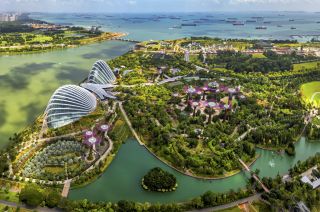
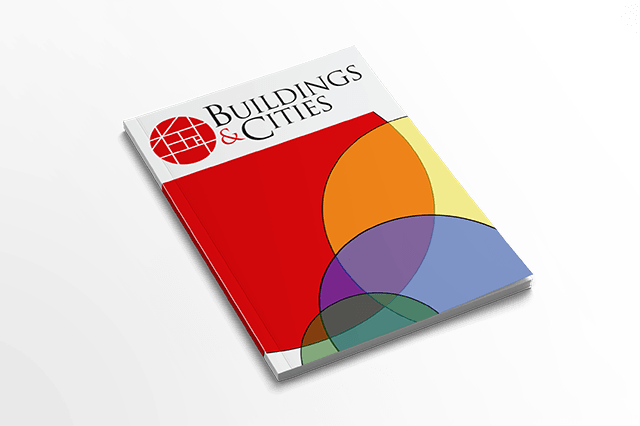
Latest Commentaries
Decolonising Cities: The Role of Street Naming
During colonialisation, street names were drawn from historical and societal contexts of the colonisers. Street nomenclature deployed by colonial administrators has a role in legitimising historical narratives and decentring local languages, cultures and heritage. Buyana Kareem examines street renaming as an important element of decolonisation.
Integrating Nature into Cities
Increasing vegetation and green and blue spaces in cities can support both climate change mitigation and adaptation goals, while also enhancing biodiversity and ecological health. Maibritt Pedersen Zari (Auckland University of Technology) explains why nature-based solutions (NbS) must be a vital part of urban planning and design.